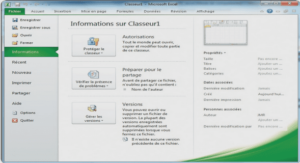The surfaces were characterized with different techniques in order to study their properties and possible impact on cell adhesion growth and morphology. In all cases, substrates of the coatings were analyzed too, such as PET or amine-rich surfaces, in order to compare them to the CS surfaces. Bioactive surfaces based on LP were analyzed by contact angle and atomic force microscopy (AFM). The CS grafted on the bioactive surfaces was quantified by using Toluidine blue O dye and the amino group content was determined by using Orange II dye. The antifouling properties of commercial amine plates with CS were studied by protein adsorption analysis using Texas Red. All these tests are described below.
Contact angle measurement
Contact angle measurement was used to study the surface wettability, i.e. capacity of a liquid to spread on a surface. If water is used, the contact angle describes the hydrophobic or hydrophilic character of the material. Illustrates the interfacial tensions present when a droplet is placed on a surface: liquid-solid (γsl), liquid-vapor(γlv) and solid-vapor(γsv), they are related to the contact angle (i.e the tangent angle in the droplet profile) by the the Young Dupre equation (3.1). Usually small contact angles (lower than 90º) corresponds to high wettability while large contact angles (higher than 90º) corresponds to low wettability (Biophy Research, 2013; Bracco et Holst, 2013).
Contact angle is largely used in the biomaterials domain since it is a low cost, simple technique that can give us information about the hydrophobicity and polar nature of materials. However contact angle does not give us information about the chemical composition of the material and the measurements can be affected by several factors such as contaminations and time between the measurement and the drop placing (Biophy Research, 2013; Temenoff et Mikos, 2008).
In this project the wettability of the surfaces was measured by static water contact angle, with a VCA Optima XE (AST products, Billerica, MA) and a syringe (100µl technical syringe, Hamilton, Reno, USA). After the preparation of surfaces as detailed in 3.1, the sample holder was cleaned with an aqueous solution of ethanol 70% v/v and the syringe was rinsed 5 times with Milli-Q water before use. Contact angle measurements were done using Milli-Q water drops of 2 µl size on samples of 1cm² . The measurements were taken ≈3 seconds after the droplet was placed on the surface. Three measurements were performed for each surface and three surfaces were prepared for each condition in each experiment.
AFM
Atomic force microscopy (AFM) is a technique that allows imaging the topography of a surface. This technique provides three dimensional images of the surface ultrastructure with molecular resolution. AFM is widely used for materials characterization since it obtains images in real time and requires minimal sample preparation. The AFM can be used to probe the physical properties of the sample such as molecular interactions, surface hydrophobicity, surface charges and mechanical properties. The AFM imaging is performed by sensing the force between a very sharp probe and the sample surface . The image is generated by recording the force changes as the sample is scanned by the probe in x and y directions (Dufrene, 2002).
INTRODUCTION |





